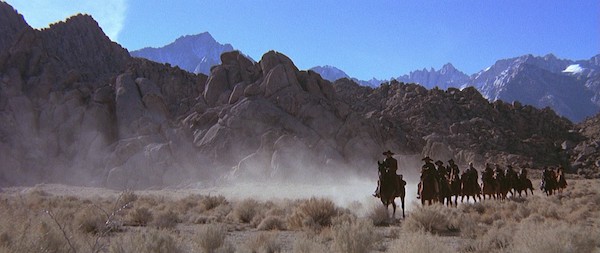7 Remarkable Lillian Gish Films
You may have heard about the great actress Lillian Gish, whose film career lasted from the early days of film in the 1910s all the way to her final movie appearance in The Whales of August (1987). But if you haven’t seen much of her work, you might be wondering where to start–especially in regards to her silent era classics. Here’s a list of seven notable silents to help you get acquainted with this exceptional artist.
7. The Mothering Heart (1913)

Lillian and her sister Dorothy were teenaged stage actresses when they joined
Biograph studio in 1912, back when most films were one or two reels long.
Working mainly with director D.W. Griffith, they quickly learned the ropes of
film acting and became two of Biograph’s most familiar faces. Dorothy had a
knack for comedy while Lillian was drawn to tragic stories, such as the
two-reeler The Mothering Heart. Playing
a tender-hearted and rather naive young wife who discovers her husband is
having an affair, Gish’s sincere performance quickly wins over the viewer. A
surprising late scene involving a burst of anger shows her range, even this
early on in her film career.
6. Broken Blossoms

Gish is sometimes identified with “tragic waif” types of roles, and there’s no better example than her portrayal of Lucy Burrows in this heartbreaking melodrama. Based on a short story by Thomas Burke, it follows the gentle, idealistic Cheng Huan who leaves China in hopes of spreading Buddhism abroad. He ends up living in a gritty London neighborhood where he encounters Lucy, the angelic and terribly abused daughter of the thuggish boxer Battling Burrows. While the casting of Richard Barthelmess as Cheng seems controversial today, he plays the role with sincerity and dignity. Gish is unforgettable as the persecuted Lucy, delivering a heartrending performance. One claustrophobic scene involving her animal-like reaction to being trapped in a closet would even have echoes in The Shining decades later.
5. True Heart Susie (1919)

No film could create a sweet, nostalgic portrait of rural life quite like a
silent film, and True Heart Susie is
one of the finest examples. Gish plays the shy country girl Susie, who is
“sweet on” the neighbor boy William. Dreaming of a bright future with him,
Susie decides to secretly help him go to college by selling her beloved cow and
allowing him to believe a rich benefactor is lending him a hand. Ah, but what
if William eventually falls for someone else? This film radiates a love of
youthful “days gone by,” and both it and Gish’s performance are sweetly
sentimental without getting too cloying.
4. Way
Down East (1920)

One of the box office hits of 1920, Way Down East was the result of Griffith
taking a decidedly old-fashioned Victorian play–what folks might call a “hoary
old chestnut”–and transforming it to as close to an art piece as anyone could.
Lillian played the innocent Anna who’s put through a wringer of tragic events.
She’s seduced by a manipulative cad, gets cast aside, deals quietly with the
resulting pregnancy, loses the baby, and tries to start over as a hired girl on
a farm. For its most iconic sequence, where Anna is collapsed on an ice floe
drifting closer and closer to a waterfall, Gish insisted on trailing her hand
in the real, icy river for effect, resulting in permanent nerve damage.
3. The White Sister (1923)

The words “purity” and “spirituality” were certainly associated with Lillian Gish, and this feature was an ideal vehicle to showcase those qualities. Gish plays a prince’s daughter who loses her noble status, and after hearing that her lover was killed during an expedition, she decides to become a nun. While settling into her new life, she’s shocked to learn that her lover is alive. Filmed in Italy, it was the first film Gish appeared in after leaving the Griffith fold (albeit on friendly terms). She was very interested in recreating the Catholic “taking the veil” ceremony, which apparently had never been captured on film before. She worked closely with the clergy to ensure it was conducted with respect and authenticity.
2. The Scarlet Letter (1926)

Gish’s turn as Hester Prynne gave her one of the few-and-far-between chances to expand beyond her innocent waif roles. Directed by Swedish filmmaker Victor Sjöström and costarring the international star Lars Hansen, this mid-1920s feature is considered one of the most faithful adaptations of Hawthorne’s novel. Gish herself had insisted that MGM adapt The Scarlet Letter, despite their concerns about the subject matter. She proved that she could step gracefully into a “sensual” role while still giving it poignancy and dignity.
1. The Wind (1928)

One of the masterpieces of the late silent era, this dark romantic drama was also Gish’s final silent. Gish plays Letty, a poverty-stricken woman who goes to live on a remote Texas ranch with her cousin and his wife Cora. The area is continually plagued by raging winds, said to drive people mad. Letty clashes with Cora, who’s jealous of her beauty, and she also receives unwanted attention from local men. When Cora finally turns Letty out of the house, she reluctantly agrees to marry the rancher Lige. In the meantime, the ever-present wind begins to drive her towards insanity. Elegantly-directed and featuring a magnificent performance by Gish, The Wind is a must-see for any fan of silent films.
…
–Lea Stans for Classic Movie Hub
You can read all of Lea’s Silents are Golden articles here.
Lea Stans is a born-and-raised Minnesotan with a degree in English and an obsessive interest in the silent film era (which she largely blames on Buster Keaton). In addition to blogging about her passion at her site Silent-ology, she is a columnist for the Silent Film Quarterly and has also written for The Keaton Chronicle.




















































































































